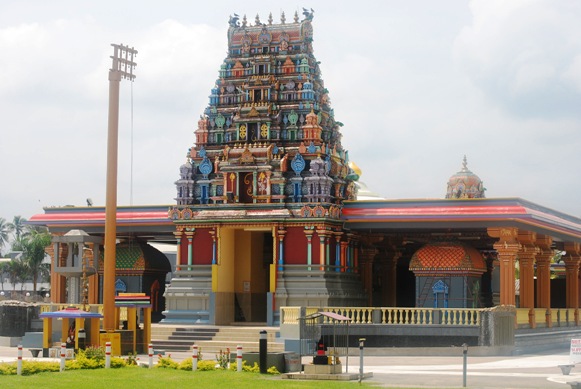 The migration of Tamil-speaking people to South Africa began in 1860, first as indentured labour with about 340 people.
The migration of Tamil-speaking people to South Africa began in 1860, first as indentured labour with about 340 people.
Today, the country has more than 250,000 Tamilians in many cities, with a majority of them settled in Natal and Durban.
As residents of South Africa for more than 140 years, Tamilians have acquired a valuable sense of identity and solidarity.
The Tamil heritage was an inspirational and healing factor during the turbulent periods over several decades.
Tamil culture is experiencing renaissance and people take great pride in their traditions, with a number of cultural organisations helping to recover the beauty of their language and heritage.
The ‘Tamil Federation of Kwa Zulu Naal,’ based in Durban is active in promoting the Tamil language and culture.
The Kavadi festival, Hindu observances and other social and community events have promoted the spirit of unity among Tamils.
Many temples were built between 1900 and 1949 and the rich traditions are nourished by Brahmin priests from Sri Lanka.
Mahatma Gandhi drew his greatest inspiration from the Tamil community in all his struggles for justice and fair play. He made a special effort to study Tamil to express his gratitude to them.
The services and support rendered by Thillaiadi Valliammai during the Mahatma’s imprisonment are well recognised in Tamil Nadu and South Africa.

Tamils in Oceania
Australia
There are about 30,000 Tamilians living in Australia, accounting for a small percentage of the country’s 18 million people. They can be found in all the six states, although a majority of them live in New South Wales and Victoria.
There are more than ten Hindu temples in Australia and Tamil is an approved subjects for the HSC examination and Tamil skill tests are conducted for children aged between 5 and 16.
New Zealand
The population of Tamil-speaking people in New Zealand is estimated to be 3000, most of who are professionals. Attempts are being made to construct Hindu temples and consolidate their cultural and religious links.

Fiji
At some point of time, Fiji had more than 110,000 Tamilians brought to the South Pacific nation to work as indentured labourers in plantations. According to some estimates, their population today is about 80,000 (out of a total number of 350,000 Indo-Fijians). However, the number of people who speak Tamil is only about 5000 and even less (1000) who can write the language, since all of them are well integrated into the local population.
Most of the Tamilians have lost their identity and do not know the place of their origin in Tamil Nadu.
‘The Then (South) Indian Sanmarga Sangam’ is the pioneer body that forged Tamil culture, Tamil education and Hindu practices in Fiji. Worship of Lord Muruga is very popular and many Tamils still go by their Tamil names such as Pillai, Mudaliar, Padayadchy, Samy, Naidu and Gounder.
New Caledonia and Tahiti
These countries have only about 20 Tamil families, descendants of early Tamil settlers who went to work in coalmines. Although they have lost their Tamil identity, they are known by Tamil names such as Pavalakody, Rayappu, Veerasamy, Saminathan and Maria Soosai.
Tamils in the Gulf
A majority of Indians in the seven countries of the Arab Gulf Cooperation Council (AGCC) are from Kerala and Gujarat but all of them (except Saudi Arabia where such associations are not allowed) have Tamil Sangam or Tamil Society.
The United Arab Emirates accounts for more than 10,000 Tamilians (a majority of them living in Dubai and Abu Dhabi), followed by Bahrain (7000), Oman (5000), Qatar (4000), Kuwait and Saudi Arabia (3000 each).
Bahrain is the most tolerant of all the AGCC states, with almost all Hindu festivals conducted with enthusiasm and support of a number of organisations and groups. There are Hindu temples in Bahrain, Oman, Dubai and Abu Dhabi.
V Sivasupramaniam is a former employee of Education Service in his native Sri Lanka. He has also worked in Nigeria and Seychelles. He is a freelance writer resident in Auckland. The above article is the third in a series, the first and second of which appeared in our July 1, and August 1, 2012 issues.






